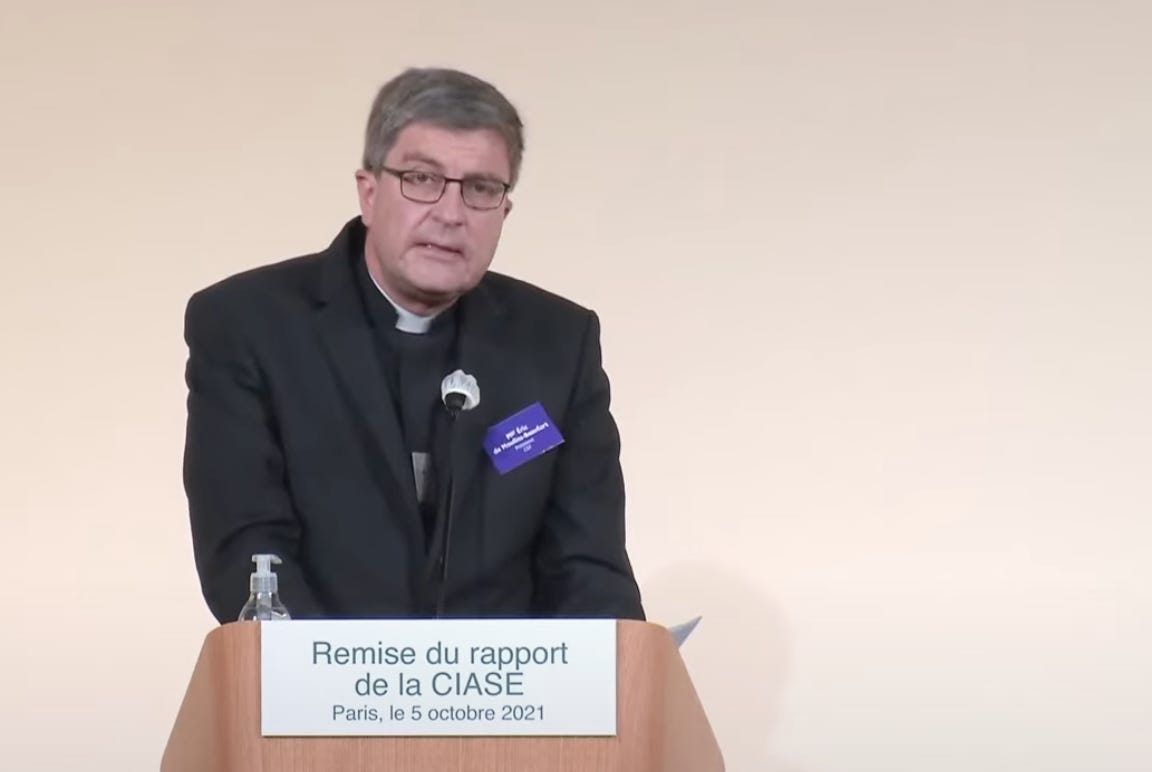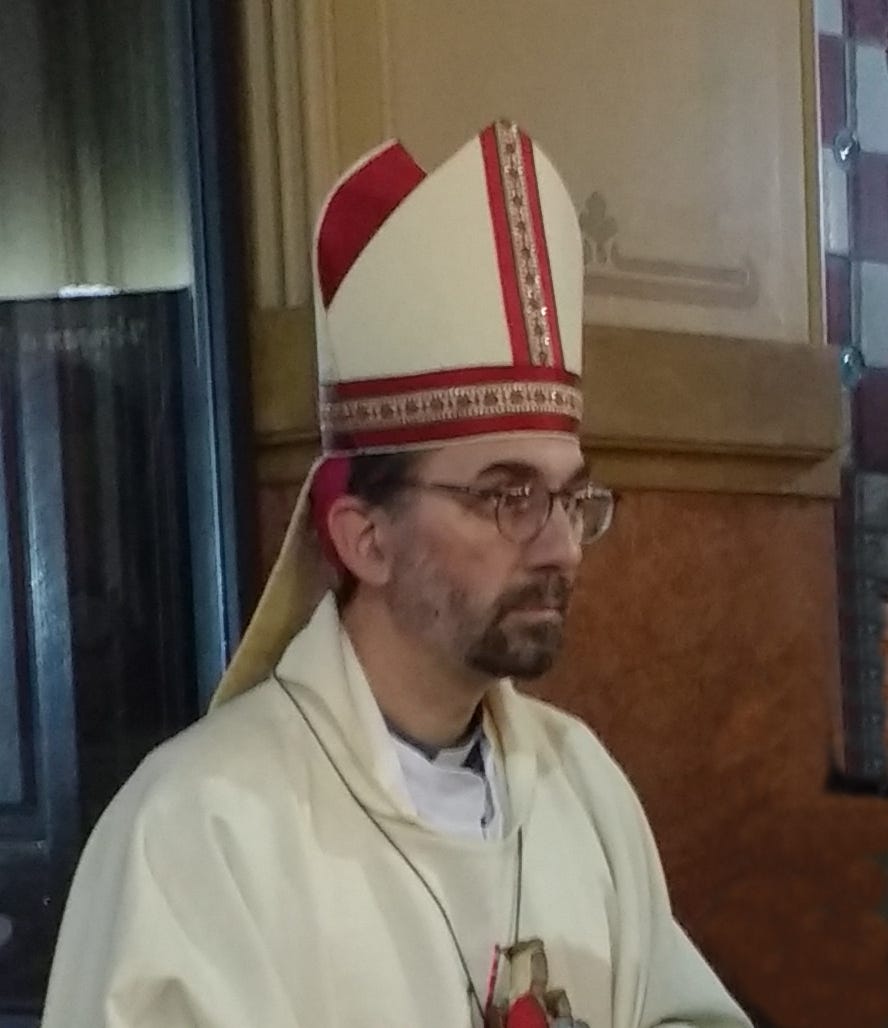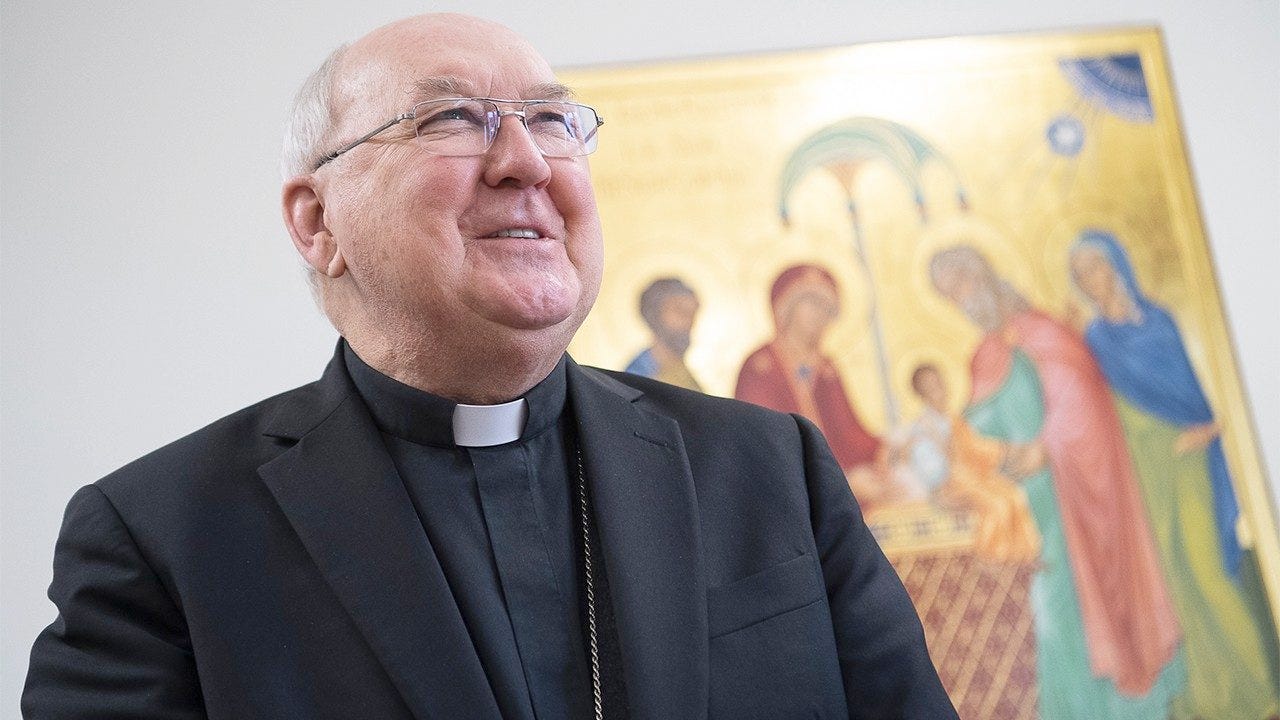An independent report on clerical sexual abuse in France has made headlines around the world, and, for many American Catholics, renewed their scandal at the issue of clerical sexual abuse in the Church.

The entire report is more than 2,500 pages, and aims to capture the picture of abuse and cover-up in the Church between 1950 and 2020.
While the report has gotten plenty of media coverage, and sparked ample discussion on social media, getting a sense of the entire document can seem daunting.
Here’s what you need to know:
The commission
The report was commissioned by the French bishops’ conference and the Conférence des Religieux et Religieuses de France, an umbrella organization for the superiors of religious communities in France.
In 2019, the two organizations aimed to set up a completely independent commission with four goals:
To shed light on the sexual violence committed in its institution since 1950.
To examine the extent to which these cases were, or were not, dealt with.
To assess the measures taken by the Church to treat this scourge.
To make all useful recommendations.
French bishops and religious superiors recruited Jean-Marc Sauvé, a longtime, well-respected French civil servant, to organize the commission, which ultimately included experts in law, medicine, psychiatry, history, sociology, ethics, and other fields. The 21 members of the commission, none of whom were members of the Church or victims, worked as volunteers for the duration of the project, which lasted 32 months and began in February 2019.
The bishops and religious superiors paid for the commission’s work, spending roughly 2.6 million euros on the project.
When it released its report Oct. 5, the commission said of its origin that “even if representatives of the French Catholic Church wanted the Commission to be set up, it is mainly thanks to the determined action of victims of violence that it actually came to be created, and it is beholden to these people to study their cases.”
The process
For more than two years, commission members interviewed 174 victims of sexual abuse, 20 priests and seminarians, countless experts, and 11 clerics who had committed sexual assault against minors — 10 priests, and one deacon.
Commission members also sent survey and questionnaires to bishops, the superiors of religious institutes, priests, religious, deacons, and lay Catholics.
The commission had nearly unprecedented access to police and Justice Ministry archives, and to the archives of dioceses and religious institutes.
The commission’s degree of voluntary access to the archives of dioceses and religious institutes is especially surprising — only one diocese and one religious institute declined to open their archives to the commission’s scholars.
That access contrasts with the limited diocesan release of records related to clerical sexual abuse in the U.S. and other countries.
In fact, when a report on clerical sexual abuse in the U.S. was released in 2004, the “John Jay Report,” scholars noted at the beginning that “it was clear from the outset that the study team would not itself have access to the confidential Church files.” The French commission did not face that challenge.
In addition to their interviews and archival research, the commission worked with the French National Institute of Health and Medical Research to conduct an online questionnaire and a general population survey, both of which were used as the basis for estimating the number of abuse victims and abusers in France.
The numbers
The commission found that “sexual violence in the Catholic Church falls broadly into three periods: 1950-1970 can be described as the height of the abuse; 1970-1990 was a period in which the abuse appeared to decline, and the early 1990s” could be described as a period of resurgence, although the commission said it was uncertain about that.
The commission identified 2,700 abuse victims between 1950 and 2020 through interviews, and another 4,800 through archival research.
However, the commission used its sociological research to report that “the number of child victims who suffered at the hands of clergy, monks or nuns is...estimated to be about 216,000” between 1950 to 2020.
“By broadening the analysis to include persons connected to the Church (staff of Catholic schools, laypersons providing catechism or chaplaincy services, organizers of scouts or other Catholic youth movements) the estimated number of child victims rises to 330,000 for the whole of the period,” the commission reported.
Those numbers have made headlines around the world.
For its part, the commission said it was confident estimating the number of clergy abuse victims in a range between165,000 and 270,000. The reported number, 216,000, sits in the middle of that broad estimated range.
The commission made a few notes about its estimate. It said that “sexual violence on an equally massive scale occurred across French society,” and noted that the vast majority of people who suffer sexual abuse do so at hands of family or friends.
But, the report said, according to its estimates of the problem, “the Catholic Church is…with the exception of family and friendship circles, the environment in which the prevalence of sexual violence is by far the highest.”
As to the number of clerical abusers, the report estimated, based upon its review of archives and testimony, a range of “between 2,900 and 3,200 aggressors….a ratio of 2.5% and 2.8% of clergy and monks from 1950 to today.”
By comparison, the U.S. John Jay study found that “4% of all priests active between 1950 and 2002 had allegations of abuse.”
The number of alleged abusers and estimated victims raises questions. The 2004 American study found that 59% of accused priests were accused of a single allegation, and fewer than three percent of all priests accused of abuse are alleged to have had more than 10 victims. That is a marked difference from the numbers in the French report, which alleges an average of 67.5 victims per alleged abusive priest.
The French commission noted that its research “would imply a very high number of victims per aggressor.”
“However, such a result is not impossible as scientific research shows that a sexual predator can effectively assault a great number of victims, especially predators of male children - as is overwhelmingly the case in the Catholic Church,” the commission said.
The commission said it was “conscious of the difficulty of ascertaining the real number of clergy and monk aggressors from a study reliant mainly on archives,” but did not otherwise resolve the questions raised by the estimated number of victims and abusers.
The report estimated that 80% of abuse victims in the Church were boys, in line with findings in the American “John Jay Report.” By contrast to the Church study, a broader study cited in the report found that 75% of total child sexual abuse victims in France were girls.
The commission said it could not reasonably estimate the number of Catholics who suffered clerical sexual abuse as adults.
The recommendations
The commission found that while Church officials in France have made some efforts to ensure safe environments for children, “these measures have often been very late coming and unequally applied once in place. Imposed in reaction to events, they appear to the Commission to be generally insufficient.”
The commission made 45 recommendations for reform in the Church. Some are likely to be taken up, while others are unlikely to be considered, or are beyond the purview of the French bishops to decide.
The commission recommended:
Requiring background checks for Church personnel in contact with minors or vulnerable people.
Developing a national abuse reporting and response system.
Building a network of “support centers” which prioritize listening to alleged victims.
Reconsidering the impact of clerical celibacy, and the way it is discussed in the Church — “in particular with regard to the representation of the priest and the risk incurred of bestowing on him the status of hero, or of placing him in a position of dominance.”
“Identify all forms of distorted charism and over-involvement in pastoral practices and all possible cross-over between seduction and charism.”
Considering “in what ways the paradoxical obsession of Catholic morality on issues of sexuality could be counterproductive in the fight against sex abuse.”
Changing the way sexual abuse is discussed in the Church, especially its framing in the context of the sixth commandment.
Developing a just system for compensating victims.
Allowing alleged victims better access to the canonical trials and other penal processes of allegedly abusive priests.
“Recognize the systemic responsibility of the Church and, as such, examine the factors which contributed to its institutional failure. Acknowledge that the Church’s social and spiritual role confers on it a particular responsibility in the society in which it plays a part.”
The response
Pope Francis on Wednesday said the report was a “moment of shame” for the Church.
“To the victims I wish to express my sadness and my pain for the traumas they have endured and my shame, our shame, my shame that for so long the Church has been incapable of putting this at the center of its concerns, assuring them of my prayers.”
“I encourage the bishops and religious superiors to continue to do everything possible so that similar tragedies might not be repeated.”
“I express my closeness and fatherly support to the priests in France in the face of this trial which is difficult but beneficial, and I invite the Catholics in France to assume their responsibility to guarantee that the Church might be a safe home for everyone,” the pope added.
Bishop Éric de Moulins-Beaufort, president of the French bishops’ conference, has issued an apology, saying the report fills him with shame, horror, and determination to continue responding to clerical sexual abuse.
Francoi Devaux, who leads a victims’ group in France, said that reports would be “a big turning point. We will understand the scale of a mass crime that happened in France and from there; we will be able to estimate what happened elsewhere.”



